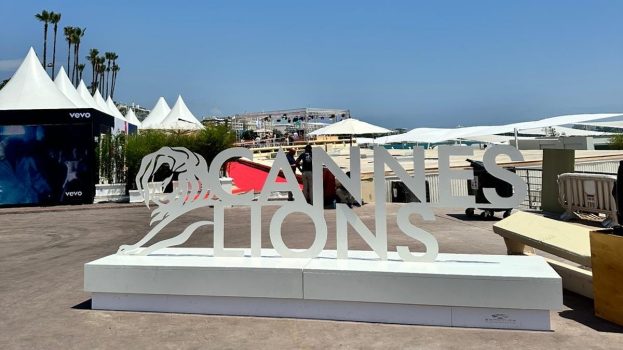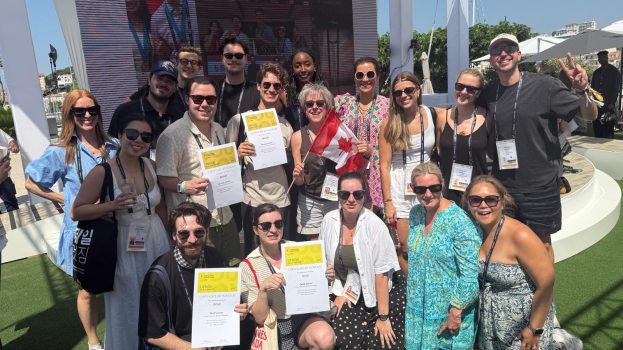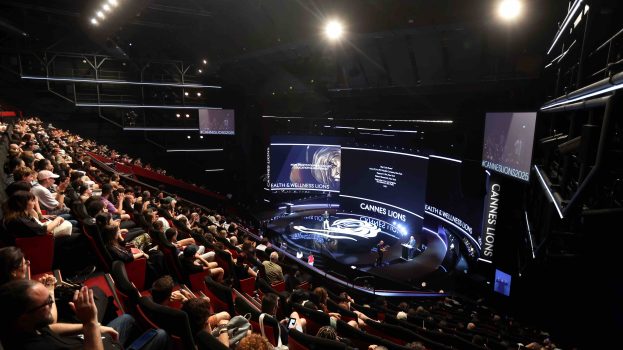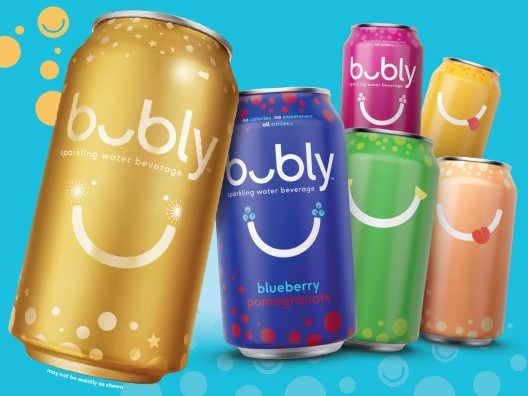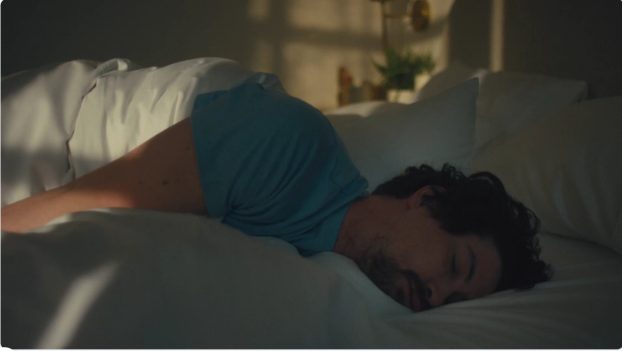You are reading a deep dive into what helped this year’s winners propel themselves to the top of the 2020 Creative Report Card. Be sure to check out other coverage of this year’s class, as well as the full rankings across brands, agencies, creatives and strategists.
This story originally appeared in the March/April 2020 issue of strategy.
An Eritrean boy in a long sleeve shirt approaches a Norwegian speed skater. The worlds-apart duo meet for the first time in a dust field surrounded by burned out tanks in Eritrea. Three decades had passed since the country began, and ended, its War of Independence, leaving family-less children in its wake.
“Why are you so popular?,” asks the man from Norway as the 12-year-old child is swarmed by a band of boys his age. “Because I have long sleeves.” In that moment he strips the shirt from his back, rolls it up, ties it into a ball and begins to play.
This is the origin story of Right To Play (#1 Brand). It’s a memory passed down through the charity by founder Johann Olav Koss, the athlete who met the boy while on a humanitarian trip en route to the 1994 Olympics. Look closely, and you can see the tale woven in the non-profit’s new logo. The ball is a nod to the founding story and symbolises the strength kids have to overcome adversity. Pulled apart, it reveals three letters: R, T, and P.
The Easter egg was placed there by BBDO’s Mike Nugent (#1 Designer), and is obvious only to those in the Right To Play family fold. It’s a small detail in a larger rebrand, which was led by BBDO in early 2018 and later met with a client response that every agency dreams of: “Finally,” said Olav Koss when seeing the “We Rise” platform for the first time, “you’ve captured what our organization has been trying to do for the past 15 years.”
Articulating its raison d’etre was once the organization’s biggest challenge, says Kevin Frey, the non-profit’s CEO since 2015. He explains that before BBDO, Right to Play was, to a fault, “methodology-focused” (talking to donors about the tactical things it does for vulnerable children) vs. “ultimate impact-focused” (talking about the long-term effects of its programs). “I don’t think we were doing ourselves justice… people didn’t realize the issues we were wrestling with.”
The first exercise for the agency was a planning one. Led by BBDO’s then-VP of planning Tom Kenny (#1 Planner) – but who is now the CSO at Ogilvy – the team of creatives, a couple account people, some strategists and a group of Right To Play stakeholders collaborated to pin down its reason for being. Many months and meetings later, the agency boiled the charity’s mission down to three words: “protect, educate, empower.”
Right to Play protects boys by reducing peer violence in schools in Pakistan. It educates youth on how to prevent the transmission of HIV in Uganda. It empowers girls to say ‘no’ to unwanted sex in Tanzania. And it does all of this through play-based learning, training teachers and designing games that turn at-risk kids into “Uprisers” (a term coined by BBDO and used to describe the 2.3 million kids impacted by RTP’s programs each year).
The organization understood its purpose, but the public did not. Most, says Nugent, thought it just gave out sports equipment. Many, adds Kenny, dialled in on the word “play” and “while that’s a good thing, it’s somewhat trivial. If you have the choice between donating to cure cancer or donating to play, most people are going to donate to cure cancer.”
Plus, Frey says Right To Play had typically shied away from showing the ugly side of its work. “We were always a very happy brand,” he says. “But BBDO helped us see that… you have to bring the context and the reality of these kids’ lives to bear so that the viewer understands what they’re facing.”
The team landed on “We Rise,” a series of uncomfortable, powerful spots, where kids are shown fighting against child marriage, slave labour and armed conflict, while a young girl waxes poetic. The anthem was inspired by two Malian girls who shared a powerful poem with their village elders, reducing many to tears, says Frey. While the spots graced the annuals of almost every awards program in the Creative Report Card, there was far more to the piece than slam poems set to drum beats.
It took eight months to revamp Right To Play’s entire visual ID, says Nugent, who was the self-professed “gatekeeper” of its rejigged brand guidelines, ensuring all communications – including editorial, promotional items, clothing, letterheads and business cards – were up to code. “Without exaggeration, we probably developed 10,000 slight variations of the new logo. I still have stacks on my desk as memories of that process,” says Nugent.
The beefy design challenge entailed consultations with Right to Play stakeholders to ensure the visual and verbal language was consistent across its 15 operating markets. Through all of the changes, Frey says the brand went from being in the spotlight to hiding in the shadows. The children were made the heroes, which was initially “tricky” for the organization to wrap its head around. Because, he says, Right to Play was always the protagonist. It previously sold its work primarily to high net worth individuals, corporate and government donors by speaking to the specifics of what it does. So before the shift, it had to be in the spotlight.
Right to Play looked to future-proof by building a different group of supporters: monthly donors. They’re much less interested in hearing about the “methodology” and far more attuned to “impact,” says Frey, which “We Rise” delivers in spades. Before the rebrand, he says, the non-profit had about 150 active monthly donors. Today, it’s close to 3,500. “So the proof is in the pudding, we massively increased the size of our supporters on the back of this repositioning.”
While Frey is mum on the details for phase two, he does hint at stripping the campaign of its “cinematic” approach. The team is exploring lower production methods of capturing kids in situ. “Raw, real and authentic” is how Frey describes the next spots that will show the realities of vulnerable children. “It will be their voice telling their stories,” he says, perhaps giving them cell phones to document their days. Unscripted first-person narratives? It’s safe to say Right to Play won’t be shying away from context next time either.




